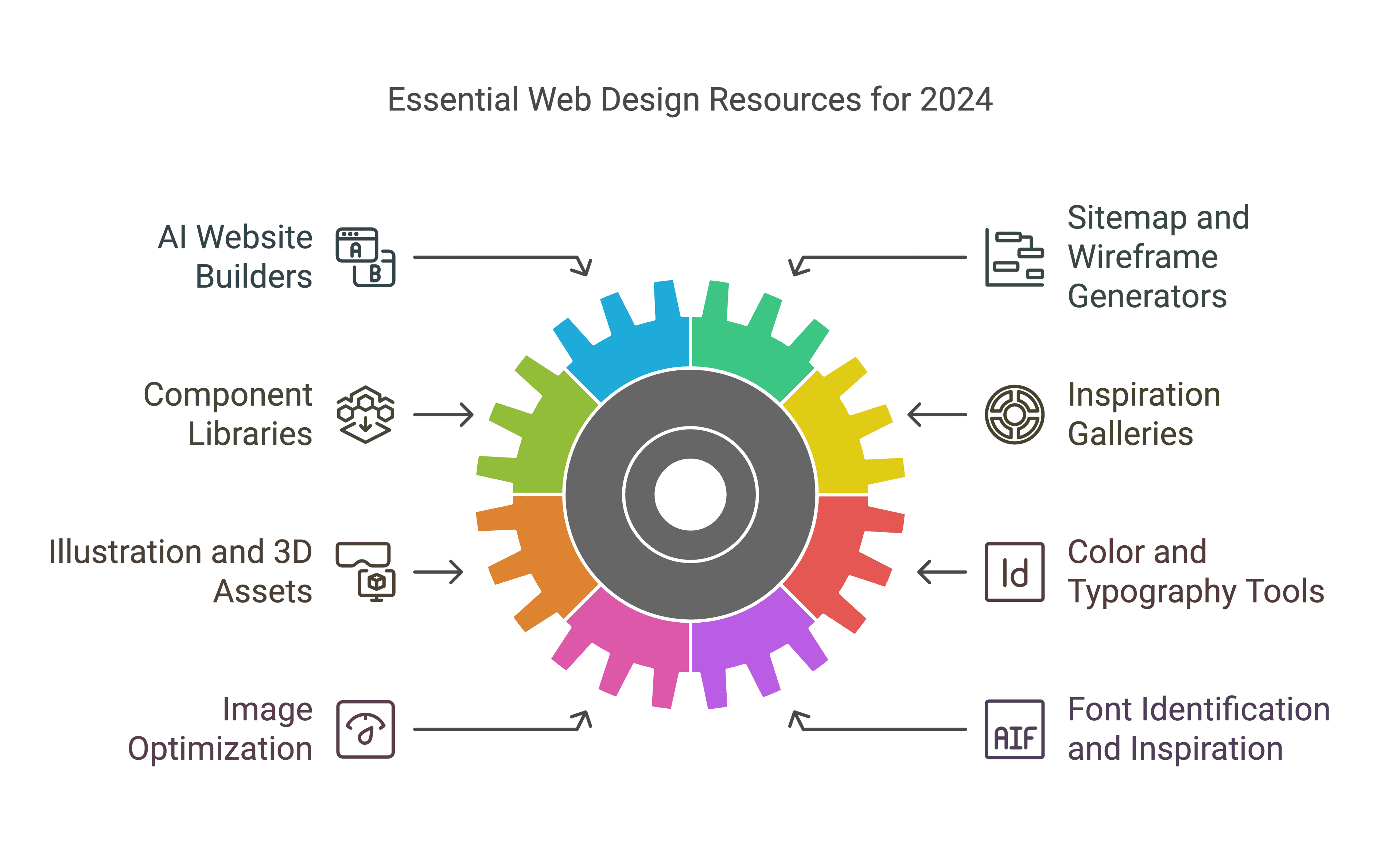
Ken Kariuki
Shiftpulse Marketers
The ShiftPulse Blueprint: Designing Websites That Resonate with the Kenyan Customer

TL;DR: Kenya’s digital market in 2025 demands mobile-first, AI-enhanced, and conversion-focused website design. Businesses must leverage social commerce, video marketing, and e-commerce growth while ensuring fast delivery, localized payment options, and personalized user experiences.
Kenya's digital landscape is dynamic and rapidly evolving. To effectively reach and engage with the Kenyan customer online, businesses need a deep understanding of the market, consumer behavior, and the latest website design trends. This article provides a comprehensive guide to navigating the Kenyan digital market in 2025, offering actionable strategies for creating websites that resonate with your target audience.
Understanding the Kenyan Digital Landscape
To understand the Kenyan digital landscape, it's essential to conduct thorough research on internet usage, popular platforms, and online behaviors. This research helps businesses grasp the nuances of the market and tailor their strategies accordingly1. Kenya boasts a vibrant and youthful online population. With a median age of 20, this tech-savvy generation is driving the country's digital surge. However, recent data also indicates a slight decline in the growth rate of new social media users, suggesting that social media adoption might be approaching saturation2.
As of early 2025, Kenya has:
- 68.8 million mobile connections, exceeding the population size due to the common practice of using multiple SIM cards1.
- An internet penetration rate of 48%, with 27.4 million internet users1.
- 15.1 million active social media users, representing 26.5% of the population1.
These figures highlight the significant growth in Kenya's digital space, presenting immense opportunities for businesses to connect with their target audience online. Further amplifying this growth is the introduction of Starlink, SpaceX's satellite internet service, which has the potential to revolutionize internet accessibility in Kenya by offering high-speed connectivity to even remote areas3.
Top Websites and Platforms
Knowing where Kenyans spend their time online is crucial for effective digital marketing. In 2025, the most popular websites in Kenya span diverse categories, including:
- Entertainment: YouTube remains a dominant force, ranking first in overall website traffic4.
- Social Networks: Facebook, Instagram, TikTok, and X (formerly Twitter) are popular social platforms. While varying data exists on their precise usage rates, both Facebook and WhatsApp have a significant market share in Kenya. Facebook is widely used, and WhatsApp boasts a usage rate of 54.4%4.
- Education and Jobs: Websites like KNEC and LinkedIn cater to Kenya's young and ambitious population4.
- Shopping: E-commerce platforms like Jumia and Play.google.com are gaining traction as online shopping becomes more prevalent4.
Understanding the popularity of these platforms allows businesses to tailor their digital strategies and target their audience effectively.
Online Behavior Trends
Kenyan consumers are increasingly embracing online services and digital platforms for various needs:
- Mobile-First Approach: With a high mobile penetration rate, Kenyans primarily access the internet through their smartphones7. This necessitates mobile-optimized websites and digital content.
- Social Commerce: Social media platforms are evolving into shopping destinations7. Businesses need to leverage social commerce features and engage with consumers on platforms like Instagram Shops and Facebook Marketplace. This trend presents a unique opportunity when combined with the mobile-first approach. By integrating social commerce features within mobile-optimized websites, businesses can create a seamless and engaging shopping experience for Kenyan consumers, maximizing conversions and brand loyalty.
- Video Marketing: Video content is highly popular, particularly short-form videos on platforms like TikTok and YouTube3. Businesses should prioritize video marketing strategies to capture audience attention.
- E-commerce Growth: Kenya's e-commerce sector is experiencing rapid growth, fueled by mobile money adoption and increased internet access. Statista projects that Kenya's e-commerce revenue will reach US$922.10 million by 20258. This presents opportunities for businesses to establish online stores and leverage dropshipping models.
- Faster and Simplified Delivery: Consumers in Kenya are showing a growing preference for faster and more simplified delivery options8. Businesses need to optimize their logistics and delivery processes to meet these expectations and enhance customer satisfaction.
- Emerging Product Categories: The demand for smart home devices and eco-conscious products is on the rise in Kenya9. This presents new opportunities for businesses to cater to these emerging consumer preferences.
- AI Integration: Artificial intelligence is not just about making websites smarter; it's also about personalizing the customer experience. AI-powered tools can analyze vast amounts of data to provide valuable insights into consumer behavior, enabling businesses to personalize their offerings and marketing campaigns3. AI can also automate routine tasks, such as email marketing and customer segmentation, freeing up resources for more strategic initiatives.
By understanding these trends, businesses can create websites and digital campaigns that align with consumer preferences and online behavior.
Defining Your Target Audience
To create a website that truly resonates with your audience, you need to define your ideal customer profile. This involves developing buyer personas that represent your target market segments.
Creating Buyer Personas for the Kenyan Market
While specific resources on developing buyer personas for the Kenyan market in 2025 were not explicitly identified in the available information, we can extrapolate from general guidelines and market insights10. Here's a framework for creating effective buyer personas:
Demographics: Consider age, gender, location (urban vs. rural), income level, education, and occupation. For example, a young, urban-dwelling professional in Nairobi might have different needs and online behaviors compared to a farmer in a rural area.
Psychographics: Delve into their values, interests, lifestyle, and online behavior. What motivates them? What are their pain points? For instance, are they driven by convenience, affordability, or social status? Understanding their values can help tailor messaging and website design.
Technographics: Understand their technology usage, preferred devices, social media platforms, and online habits. Do they primarily use smartphones or have access to laptops and desktops? What are their preferred social media platforms? This information is crucial for optimizing website design and content delivery.
Goals and Challenges: Identify their goals, aspirations, and the challenges they face that your product or service can address. Are they looking for information, entertainment, or specific products or services? Understanding their goals helps create a user-centered website experience.
By creating detailed buyer personas, you can tailor your website's design, content, and messaging to resonate with specific customer segments. For example, understanding the widespread use of M-Pesa in Kenya can inform decisions about integrating mobile payment options on your website. Similarly, recognizing the influence of local communities and cultural values can guide the visual style and language used in your website design.
Designing Effective Websites for the Kenyan Market
With a clear understanding of the Kenyan digital landscape and your target audience, you can now focus on designing a website that effectively meets their needs and expectations. Researching successful and unsuccessful website designs in Kenya provides valuable insights into best practices and common pitfalls to avoid11.
Successful Website Design in Kenya
Several factors contribute to successful website design in Kenya:
- Mobile Optimization: Given the mobile-first nature of the Kenyan market, websites must be responsive and optimized for various screen sizes12. This ensures a seamless user experience across devices. Failing to prioritize mobile optimization can alienate a significant portion of the Kenyan audience13.
- User-Friendly Navigation: Simple and intuitive navigation is crucial for ensuring visitors can easily find the information they need11. Clear menus, search functionality, and well-organized content contribute to a positive user experience.
- Engaging Content: High-quality, relevant, and visually appealing content is essential for capturing audience attention and encouraging them to explore the website further11.
- Fast Loading Speed: Slow loading times can lead to high bounce rates11. Optimizing images, leveraging caching techniques, and choosing a reliable hosting provider can improve website speed.
- Visual Appeal: Aesthetics play a significant role in user engagement11. Modern design trends, such as minimalist layouts, bold typography, and dark mode options, can enhance the visual appeal of a website. However, it's crucial to avoid overloading the design with excessive features or visual elements, as this can overwhelm users and hinder navigation13. When implementing new design trends, thorough testing is essential to ensure usability and compatibility across different devices and browsers13.
- Cultural Sensitivity: While adopting modern design trends is essential, it's equally important to consider cultural nuances and preferences when designing websites for Kenyan audiences. This includes being mindful of local languages, visual styles, and color palettes that resonate with the target market.
By incorporating these elements, businesses can create websites that are both functional and engaging for the Kenyan audience.
Developing a Website Strategy for the Kenyan Market
Creating a successful website requires more than just an attractive design. It's crucial to approach website development strategically, setting clear goals, defining key performance indicators (KPIs), and addressing technical considerations.
Setting Clear Goals and KPIs
Before launching a website, it's crucial to establish clear goals and define key performance indicators (KPIs) to measure success. While specific resources on setting goals and KPIs for Kenyan websites in 2025 were limited in the available information, we can draw insights from general guidelines and industry best practices14. Here are some potential goals and corresponding KPIs:
KPIDescriptionCustomer Churn RateThe percentage of customers who stop using your website or service over a given period. A key factor affecting churn rate is the customer effort score, which measures how easy or difficult it is for customers to interact with your website14.Net Promoter Score (NPS)Measures customer satisfaction and loyalty by asking how likely they are to recommend your website to others.Customer Satisfaction (CSAT)Measures how satisfied customers are with their experience on your website.Average Resolution TimeThe average time it takes to resolve customer issues or inquiries on your website.Customer Acquisition Cost (CAC)The cost of acquiring a new customer through your website.Conversion RateThe percentage of website visitors who complete a desired action, such as making a purchase or filling out a form.Cart Abandonment RateThe percentage of customers who add items to their online shopping cart but leave without completing the purchase.Direct TrafficMeasures the number of visitors who come to your website directly by typing in your URL or through bookmarks. It reflects brand awareness and user loyalty.Organic TrafficThe number of visitors who come to your website through search engine results pages (SERPs). Tracking branded vs. non-branded traffic helps understand the impact of SEO on brand awareness16.Referral TrafficThe number of visitors who come to your website through links on other websites.Social Media TrafficThe number of visitors who come to your website through social media platforms.Pages per VisitThe average number of pages viewed by visitors during a single session.Average Session DurationThe average amount of time visitors spend on your website during a single session.Session IntervalMeasures how often users return to your website or app. Shorter intervals generally indicate higher engagement15.Bounce RateThe percentage of visitors who leave your website after viewing only one page.
By setting measurable goals and tracking relevant KPIs, businesses can assess the effectiveness of their website and make data-driven improvements.
Technical Considerations for Kenyan Websites
In addition to design and usability, technical aspects play a crucial role in website success. This includes:
- Website Speed: Optimizing website speed is crucial for user experience and search engine rankings17. Slow loading times can lead to high bounce rates and negatively impact conversions.
- Mobile Responsiveness: Ensuring your website is mobile-friendly is paramount in Kenya, where mobile internet usage is dominant17. A responsive design adapts seamlessly to different screen sizes, providing a consistent user experience across devices.
- Website Security: Implementing security measures, such as SSL certificates, protects user data and builds trust17.
- Backlink Quality: Regularly auditing the quality of your backlinks is essential for maintaining good search engine rankings16. A high number of low-quality links can harm your website's credibility in the eyes of search engines.
By addressing these technical considerations, businesses can ensure their websites are optimized for performance, security, and search engine visibility.
Content Strategies for Kenyan Websites
Content plays a vital role in attracting and engaging users. When developing content for Kenyan websites, consider the following:
- Localized Content: Creating content that resonates with the local audience is crucial3. This includes using local keywords and phrases, incorporating Swahili or other local languages where appropriate, and addressing topics relevant to the Kenyan context.
- SEO Optimization: Optimizing your website's content for search engines is essential for driving organic traffic17. This involves conducting keyword research, optimizing meta descriptions, and creating high-quality, informative content that aligns with user search intent.
By combining localized content with effective SEO strategies, businesses can ensure their websites reach the right audience and achieve their online goals.
Challenges and Opportunities in the Kenyan Market
While Kenya's digital landscape presents exciting opportunities, businesses also face certain challenges:
- Economic Factors: Kenya faces economic challenges such as tight fiscal conditions, a depreciating currency, and declining agricultural productivity18. These factors can impact consumer spending and investment in online businesses.
- Competition: The Kenyan market is becoming increasingly competitive, with both local and international players vying for market share.
- Infrastructure: While internet accessibility is improving, challenges remain in ensuring reliable and affordable internet access across all regions, particularly in rural areas.
However, these challenges also create opportunities:
- E-commerce and Dropshipping: The growth of e-commerce and dropshipping can provide alternative revenue streams and economic opportunities for Kenyan businesses8. These models can help overcome challenges like tight fiscal conditions and declining agricultural productivity by providing access to wider markets and reducing overhead costs.
- Partnerships and Franchises: Collaborating with local companies or entering into franchise agreements can be effective strategies for navigating the Kenyan market18. Local partners provide valuable insights and networks, while franchises offer established business models and brand recognition.
By understanding these challenges and opportunities, businesses can develop strategies to thrive in the Kenyan digital market.
Conclusion: The ShiftPulse Approach
Creating websites that resonate with the Kenyan customer requires a holistic approach that encompasses market understanding, audience analysis, and effective design strategies. The ShiftPulse Blueprint emphasizes the following key takeaways:
- Embrace the Mobile-First Mindset: Prioritize mobile optimization to cater to Kenya's predominantly mobile user base.
- Know Your Audience: Develop detailed buyer personas to understand your target market segments and their online behavior.
- Stay Current with Design Trends: Incorporate modern design elements while avoiding common pitfalls that can hinder user experience.
- Set Clear Goals and KPIs: Establish measurable objectives and track relevant metrics to assess website performance and make data-driven improvements.
- Develop a Comprehensive Website Strategy: Consider technical aspects, content strategies, and the unique challenges and opportunities in the Kenyan market.
By following these principles, businesses can create websites that effectively engage with the Kenyan customer, build brand loyalty, and achieve their digital goals in 2025 and beyond. To effectively implement the ShiftPulse Blueprint, consider partnering with local experts or agencies who possess in-depth knowledge of the Kenyan digital landscape and can provide tailored guidance and support.














